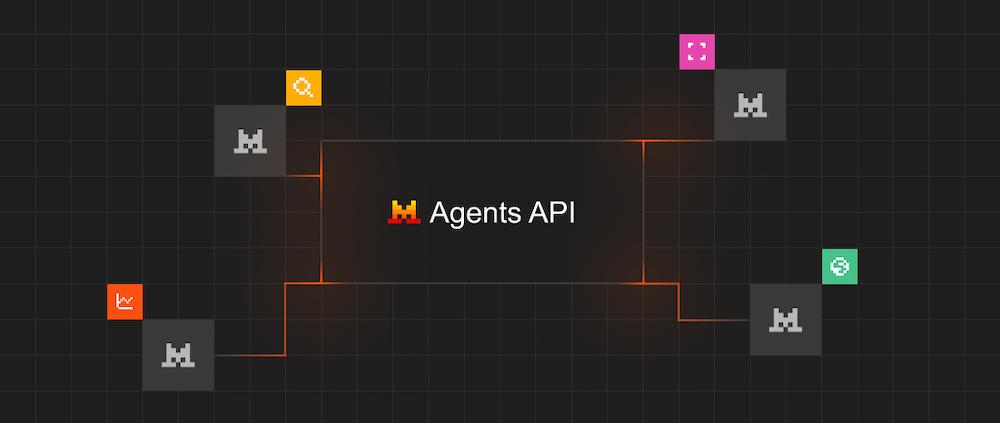Mistral
Mistral
French artificial intelligence company Mistral AI released a comprehensive agent development platform that enables enterprises to build autonomous AI systems capable of executing complex, multi-step business processes.
The recently launched Agents API positions the Paris-based startup as a direct competitor to OpenAI’s Agents SDK, Azure AI Foundry Agents and Google’s Agent Development Kit in the rapidly expanding market for enterprise automation.
The platform addresses a fundamental limitation in current language models: their inability to perform actions beyond text generation. Mistral’s approach combines its Medium 3 language model with persistent memory, tool integration and orchestration capabilities that allow AI systems to maintain context across conversations while executing tasks like code analysis, document processing and web research.
Technical Architecture and Capabilities
Mistral’s agent framework operates through four core components that differentiate it from traditional chatbot implementations.
1. The code execution connector provides a sandboxed Python environment where agents can perform data analysis, mathematical calculations and generate visualizations without compromising system security. This capability targets financial modeling, scientific computing and business intelligence applications where organizations need AI systems to process and analyze data dynamically.
2. The platform’s web search integration demonstrates measurable performance improvements in accuracy-dependent tasks. Internal testing using the SimpleQA benchmark showed Mistral Large’s accuracy increased from 23% to 75% when web search was enabled, while Mistral Medium improved from 22% to 82%. These metrics indicate the system’s ability to ground responses in current information rather than relying solely on training data.
3. Document processing capabilities enable agents to access and analyze enterprise knowledge bases through retrieval-augmented generation. However, Mistral’s documentation lacks specificity about whether the system uses vector search or full-text search methods, which affects implementation decisions for organizations with large document repositories.
4. The agent handoff mechanism allows multiple specialized agents to collaborate on complex workflows. A financial analysis agent, for example, can delegate market research tasks to a web search agent while coordinating with a document processing agent to compile comprehensive reports. This multi-agent architecture enables organizations to decompose complex business processes into manageable, specialized components.
Competitive Positioning and Market Context
Mistral’s entry into agent development occurs alongside similar releases from major technology companies. OpenAI launched its Agents SDK in March 2025, emphasizing simplicity and Python-first development. Google introduced the Agent Development Kit as an open-source framework optimized for the Gemini ecosystem while maintaining model-agnostic compatibility. Recently, at Build conference, Microsoft announced the general availability of its agent platform, Azure AI Foundry Agents.
The timing suggests coordinated market movement toward standardized agent development frameworks. All the major agent development platforms now support the Model Context Protocol, an open standard created by Anthropic that enables agents to connect with external applications and data sources. This convergence indicates that the industry recognizes agent interoperability as a key determinant of long-term platform viability.
Mistral’s approach differs from competitors in its emphasis on enterprise deployment flexibility. The company offers hybrid and on-premises installation options using as few as four GPUs, addressing data sovereignty concerns that prevent many organizations from adopting cloud-based AI services. Google’s ADK focuses on multi-agent orchestration and evaluation frameworks, while OpenAI’s SDK prioritizes developer simplicity with minimal abstractions. Azure AI Foundry Agents deliver better integration capabilities with other Azure AI services.
Strategic Business Implications
The pricing structure reveals Mistral’s enterprise focus, but it also introduces cost considerations for large-scale deployments. Beyond the base model cost of $0.40 per million input tokens, organizations pay additional fees for connector usage: $30 per 1,000 calls for web search and code execution and $100 per 1,000 images for generation capabilities. These connector fees can accumulate quickly in production environments, requiring careful cost modeling for budget planning.
The shift from Mistral’s traditional open-source approach to a proprietary model, as seen in Medium 3, raises strategic questions about vendor dependence. Organizations implementing the Agents API cannot deploy the underlying model independently, unlike Mistral’s previous releases, which allowed for complete on-premises control.
Enterprise implementations span financial services, energy and healthcare sectors, with early adopters reporting positive outcomes in customer support automation and technical data analysis. However, the platform’s recent launch means long-term reliability and scalability data remains limited.
Organizations must evaluate these platforms based on existing infrastructure, data governance requirements and specific use case complexity rather than purely on technical capabilities. The success of each approach will depend on how effectively companies can integrate agent systems into existing business processes while managing associated costs and operational complexity.

